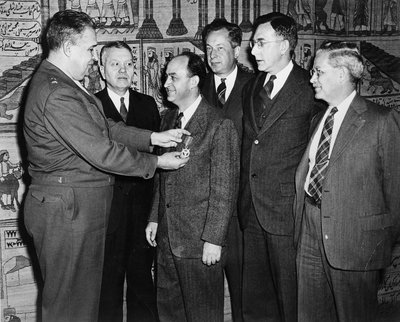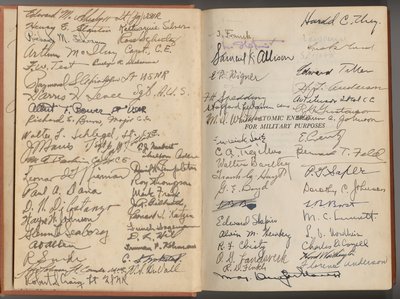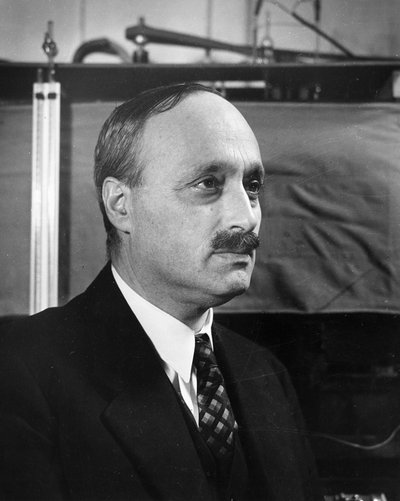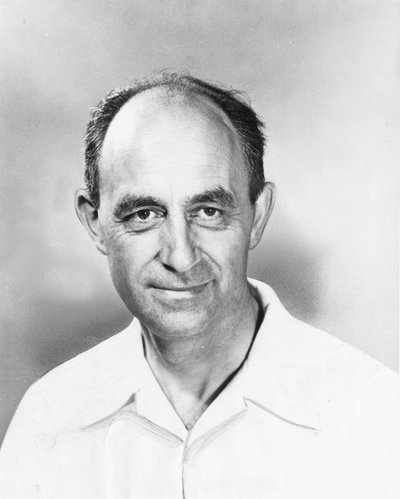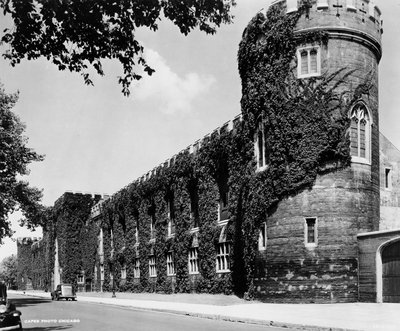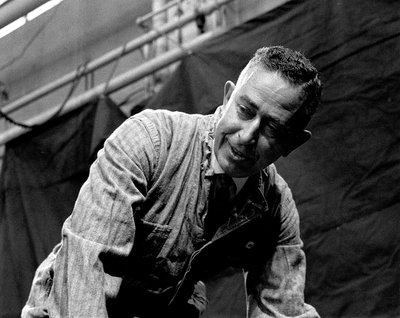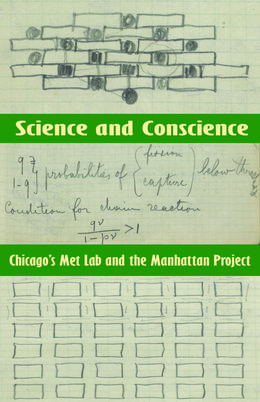Science and Conscience: Chicago’s Met Lab and the Manhattan Project
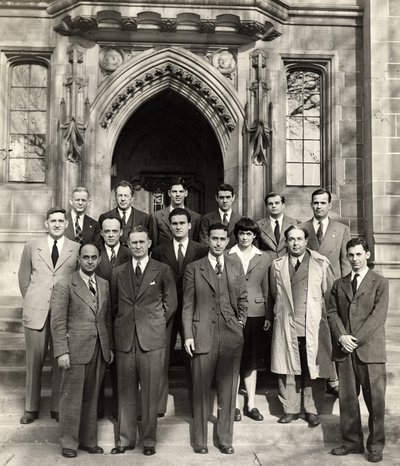
Exhibition Dates: February 19 – April 13, 2018
Location: Special Collections Research Center Exhibition Gallery, 1100 East 57th Street, Chicago, IL
On December 2, 1942, scientists at the University of Chicago produced the world’s first self-sustaining nuclear chain reaction beneath the West Stand of Stagg Field, the University’s athletic stadium. This experiment, crucial to the control of nuclear fission, drove a rapid nationwide expansion of the Manhattan Project, the secret federal research and engineering program charged with producing a nuclear bomb.
Chicago’s role in the Manhattan Project did not end with the successful operation the first nuclear reactor. Buildings across the University of Chicago campus were converted for use by the code-named Metallurgical Laboratory. The Met Lab conducted extended research on the structure of uranium, developed the process for separating plutonium from uranium, and investigated nuclear radiation’s biological effects and safety issues. At the end of World War II, the Metallurgical Laboratory was transformed into the first United States federal laboratory, Argonne National Laboratory.
Chicago’s Met Lab also took the lead in organizing scientists’ political response to the devastation caused by atomic bombs at Hiroshima and Nagasaki. Concerned about the future development and use of nuclear weapons, Met Lab veterans created the Atomic Scientists of Chicago and began publishing the Bulletin of the Atomic Scientists. They joined scientists from other Manhattan Project sites across the country and pressed successfully in 1946 for the passage of the Atomic Energy Act (McMahon Act) and creation of the civilian Atomic Energy Commission.
The Met Lab scientists achieved great technical success in their contribution to the creation of a powerful new military weapon. Yet the sobering consequences of their work moved them to enter the political arena and make the first critical arguments to control nuclear weapons and turn nuclear energy toward peaceful ends.
Based on archives and manuscripts in the Special Collections Research Center, Science and Conscience presents unique historical documents and artifacts, many not previously exhibited. Items on display are drawn from records of scientists’ organizations and the papers of those who worked on the Manhattan Project and at Chicago’s Met Lab, including Enrico Fermi, James Franck, Herbert L. Anderson, Samuel K. Allison, Samuel Schwartz, Francis W. Test, Lawrence Lanzl, John H. Balderston, Jr., Albert Wattenberg, Eugene Rabinowitch, Paul Henshaw, William B. Higinbotham, and Donald MacRae, among others.
Hours: Mondays through Fridays, 9 a.m. – 4:45 p.m., and, when University of Chicago classes are in session, Tuesdays and Wednesdays, 9 a.m. – 5:45 p.m.
Free and open to the public.
Use of Images and Media Contact
Images from the exhibition included on this page are available for download by members of the media and are reserved for editorial use in connection with University of Chicago Library exhibitions, programs, or related news.
For more information, contact Rachel Rosenberg at ra-rosenberg@uchicago.edu or 773-834-1519.
